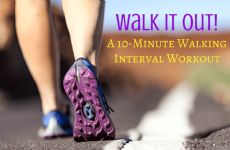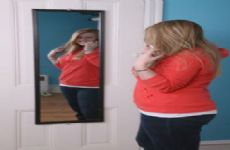|
I still remember my first runner's wave. I'd just started dabbling with the run/walk training method, feeling a bit like an impostor, when a woman came running purposefully toward me. Judging by her gazelle-like form and fluorescent gear, she was a "serious" runner, on a completely different level than my experimental jogging. That's probably why I was a bit shocked when she lifted one hand in greeting and said a breathless "Hey." Caught off guard, I turned as she passed, but it was too late to reciprocate—the running wave has a very short window. Blink and you'll miss it. The event, however fleeting, made an impact. I'd been recognized by a "real" runner as one of them, a member of the club. That two-second greeting gave me the boost of confidence I needed to stick with my run/walk program, gradually decreasing the walking segments until I was running a full mile, then two, then three, up to distances that had seemed unfathomable just a few weeks prior. In the 16 or so years since that first wave, I've passed dozens, perhaps hundreds, of runners and walkers. There's always that decision point a couple seconds before we intersect: Will we or won't we? I usually make it a point to greet other road warriors, whether it's with a wave, a nod or even a quick "Good morning." And if the other person greets me first, there's still that quick thrill, the surge of flattery. The wave is a way of commiserating without conversation. It might carry an unspoken complaint about the ridiculously hot, cold or wet weather, or appreciation for a stunning sunset. It can express amazement that we're out exercising at such an insanely early hour. The wave can say "Merry Christmas" or "Happy Sunday" or "How about those Reds?" Even during the most ordinary runs, it has the power to remind us that each mile, each step, is extraordinary in its own right. I'd estimate that eight out of 10 runners and walkers respond to waves, but there are always a couple who stare straight ahead and zoom on by without a hint of acknowledgement. These non-wavers probably aren't being rude on purpose. Some people go into sort of a trance or meditative state as the miles peel away, and may not even realize someone has greeted them. Or maybe, like me when I was on the receiving end of that first wave, they're not accustomed to being saluted by strangers and are too rattled to reciprocate. Even so, I'd be lying if I said there wasn't the tiniest letdown when a wave or greeting goes unreturned, the sense that my request to enter an exclusive club has been denied. Mizuno, manufacturer of the popular Wave running shoe, recently launched a new ad campaign showcasing "the power of the wave." Obviously the primary goal is to sell shoes, but the campaign is also designed to encourage runners to wave more often. "Running may be perceived as a solitary exercise, yet it's an activity that brings people together, even if just through the unspoken bond created by the simple wave of the hand," Kim Hoey, Mizuno's senior director of brand marketing and management, said in a statement. "When runners wave to one another, it can indicate support, camaraderie, gratitude or simply a mutual appreciation for one another as athletes." I asked a couple of seasoned runners for their thoughts on waving versus non-waving. They identified a few different factors that determine the likelihood of getting an on-the-go greeting:
Or, most importantly: We're in this together. We are runners. Do you wave to other runners and walkers? Do you think non-wavers are breaking the rules of road etiquette? |
Related Entries
More From SparkPeople |



















.png)

.png)

